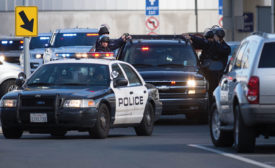Access Management
How COVID-19 has Transformed InfoSec
COVID-19 may mean the end of the open office plan, in-person conferences and handshakes. How has cybersecurity changed, and what new role will CISOs play?
June 1, 2020
Sign-up to receive top management & result-driven techniques in the industry.
Join over 20,000+ industry leaders who receive our premium content.
SIGN UP TODAY!Copyright ©2024. All Rights Reserved BNP Media.
Design, CMS, Hosting & Web Development :: ePublishing















